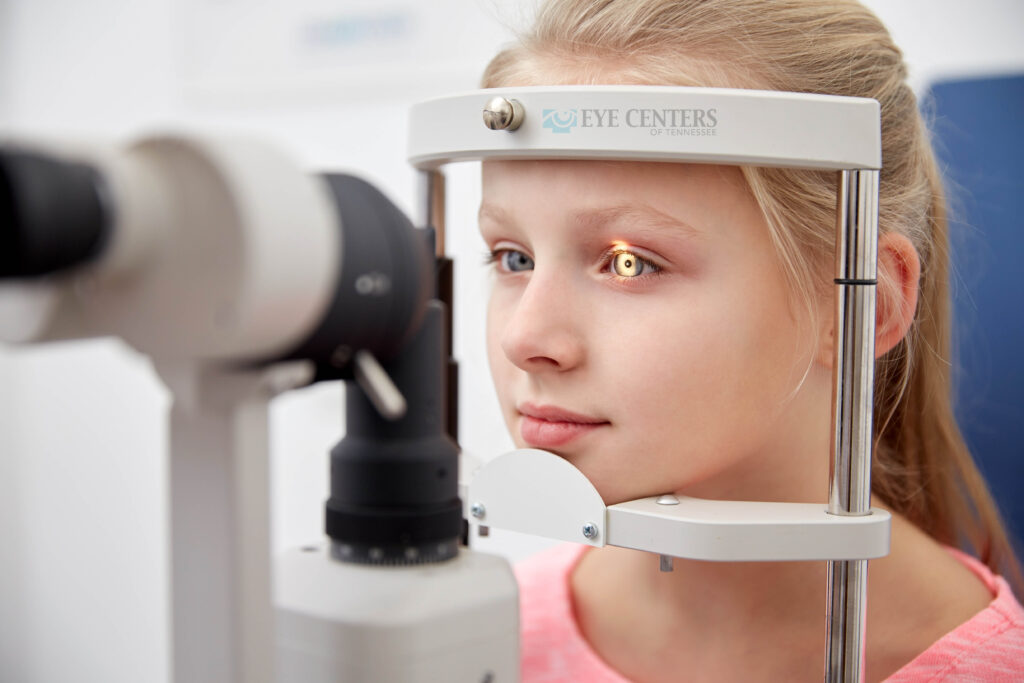
Oct 11, 2021
Strabismus
Do you ever see children with crossed eyes? It’s likely that you are seeing a condition called strabismus which is most common in children and affects about 4% of Americans. It is when one eye is in one direction, while the other is turned in another.
There are three different types of strabismus:
Accommodative Esotropia is when, because of a genetic predisposition or uncorrected farsightedness, a person’s eyes turn inward. People who have this type of strabismus often have trouble focusing their eyes, see double, resort to covering or closing one eye when trying to look at objects that are close, or compensate by turning their head. With this type, a person suffering from strabismus will usually begin to show signs within the first couple years after birth, but can usually be corrected with glasses, or more rarely, eye patches or surgery.
Intermittent Esotropia is a result of one eye fixing on one object while the other is oriented outwards. A lot of times those with this type of strabismus will have double vision, and may also have trouble reading or experience frequent headaches. They may also prefer to close one eye when trying to see things that are further away or when there is a bright light. Eyestrain is common in those suffering from esotropia. One thing to note with this form of strabismus is that patients themselves may not experience symptoms but the deviation of one eye will be noticeable to others. Treatment most often includes glasses, eye patches, different daily exercises, and less commonly, surgery to correct the muscles or either or both eyes.
Infantile Esotropia is easily recognized in babies by the inward turn of both eyes, usually becoming apparent as early as one to six months old and growing more profound as the child ages. In this case, glasses will not correct the ocular deviation because it is not caused by farsightedness. When the eyes first start to turn inward, it might only be occasional but will become more regular and consistent with time. Treatment for this kind of strabismus will consist of surgery on the eye itself to correct the muscles.
Why does strabismus happen? Strabismus occurs when the six muscles that control movement in the eye are unable to keep the two eyes pointing in the same direction together. For the most part, the inability of the muscles to control the eye comes from the brain not being able to send the right signals to the muscles in the eyes. Strabismus can run in the family or can be random.
Many times, strabismus is linked to other health issues, such as poor vision in one eye, uncorrected vision, cerebral palsy, Down syndrome, hydrocephalus, brain tumors, strokes, or head injuries with brain damage. Other at-risk groups include those with nervous system problems or Grave’s disease.

How do you detect strabismus? If you have a child, watch their eyes closely as they develop, especially in the one to six-month stage. They should be able to focus on objects with both eyes, with both eyes aligned to the object. Strabismus usually becomes apparent in children when they are unable to do this. In older children and adults, strabismus usually occurs as a side effect of a more serious problem or neurologic disorder.
If you notice signs of strabismus, your best course of action is to contact Eye Centers of Tennessee and make an appointment. They will conduct a regular eye exam but will focus particularly on looking for signs of strabismus.
If you have strabismus and require treatment, your eye care specialist will have several treatment options for you. Glasses or contacts can often help correct the misalignment, or special glasses called prism lenses to change the way light enters the eye and makes it so the eye doesn’t have to move as much to look at objects. Your specialist may also assign certain orthotics, or eye exercises, to help with alignment. Another suggestion might be that you wear an eye patch. In some cases, surgery is necessary to alter the eye muscles so that they can function correctly. Certain medications such as eye drops, ointments, or botox are also prescribed for strabismus and may be an option in conjunction with or instead of other treatments.
Left undiagnosed and untreated, strabismus can affect vision both in the short and long term. “Lazy eye” is a common indicator of strabismus and includes poor vision in the eye that is turned because the brain blacks out the vision from the bad eye to avoid seeing double. Additional side effects are blurry vision, eye fatigue and strain, bad three-dimensional vision and depth perception, and headaches. When treated properly, those with strabismus usually recover and suffer no lasting effects or complications.
